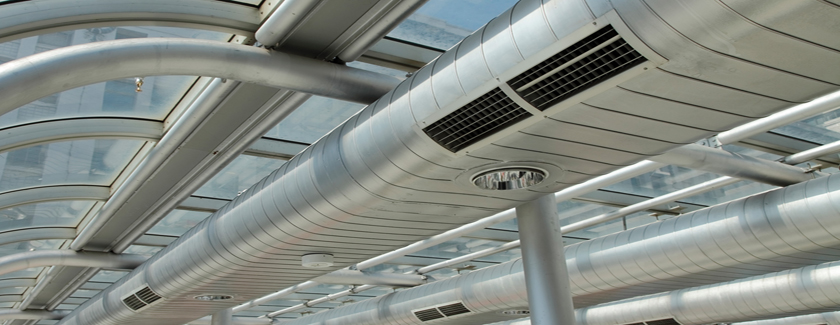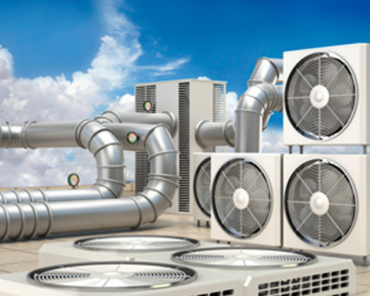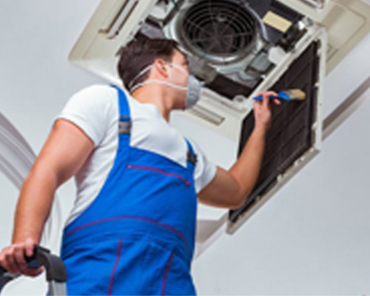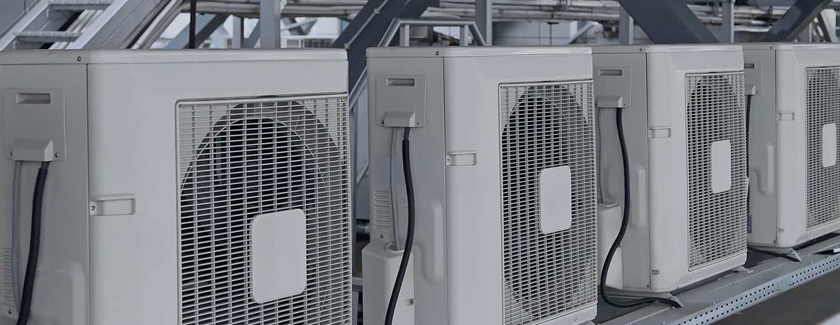HVAC
Contact us

HVAC Systems and Energy Efficiency Improvements
Due to the fact that HVAC systems account for the high-energy usage in buildings, every facility can avail increased energy and cost savings by improving the HVAC operations through proper design, installation, scheduled maintenance, and other activities.
The following section presents an outline of some suggestions to improve your facility’s HVAC system efficiency:
1. Designing: HVAC system design goes hand in hand with the architecture of the building. Deciding on the HVAC design as early as possible ensures that energy code requirements as laid out by the Department of Energy are met. This requires including the entire building’s architectural and engineering requirements into the consideration of an ideal HVAC system.
It is also important to keep in mind, the safety factors of installing large equipment. Sizing is another consideration, wherein; HVAC systems are properly sized including allowance for uncertainties. This would prevent excessive and wasteful capacity by utilizing modular equipment that can be expanded in the future, should the need arise.
2. Tuning: It is recommended to schedule bi-annual maintenance on your HVAC systems by licensed personnel. The general maintenance tasks are as follows:
a. Replacement of air filters.
b. Clean transfer coils in heat pumps, air conditioners, and chillers.
c. Inspect ducts and piping to avoid leakage and damages.
d. Inspect and repair air ducts and fan motors.
e. Check your furnace annually


3. Efficiency Settings: Substantial savings can be achieved by adjusting temperature set points —lower set points in the winter and higher temperature set points in the summer. One of the ways you can save on your HVAC bills is to optimize the operation of the system. Setting the system off when the building is not occupied can do this. Utilizing the “Auto” mode to let the fan run only when heating or cooling is being provided is an effective setting.
4. Programmable thermostat: HVAC loads vary through a 24-hour period as well as in different parts of the building. A programmable thermostat can automatically control to switch on air in rooms that are occupied, switch off during off-peak hours as well as program desired set points. Ensuring that the thermostat is placed in a location where the temperature is representative of the entire area is essential. It should be particularly not placed next to an air-conditioning unit, heat vent, or computer and electronic equipment.

5. Energy Management System: Energy management systems (EMS) or Building Energy Management Systems (BEMS) are computers controls that monitor and control a building’s HVAC and other energy systems. Software controls the HVAC system and provides notifications and alarms when the HVAC system is not operating efficiently. BEMS are often used in large and complex buildings as well as multi-site buildings.
These systems are capable of controlling many different functions in a building and include intelligent reports to help identify problems and trends, provide recommendations for fixes, and integrate control systems to automate responses.
Some automatic control features include:
1. Adjustment of air temperatures based on the indoor and outdoor temperature and humidity to let heating and cooling systems operate most efficiently.
2. Adjustments are required whenever you need cooling in the building but the outside temperature is low. With an economizer mode, your system can circulate outdoor air for free cooling during these periods.
3. Implementation of holiday period automatic setpoint adjustments.
4. Monitor temperatures to An EMS can be used to control other functions in your building as well, such as lighting, fire suppression, and security. It can manage your electric loads, prevent peak loads and optimize your electrical rate with your electric utility. EMS suppliers typically estimate that an EMS can cut the heating and cooling bills of a business with a central chiller and heating system by 10 to 50 percent, with many estimates clustered around the 20 percent range
6. Upgrading your system:An HVAC unit for a commercial building is usually expensive; hence, it is not recommended to replace it if it is not in good working order. However, if there is significant energy loss and it is nearing the end of its life, you can consider replacing it to support preventive maintenance and benefit from energy savings.
Conclusion
In conclusion, an HVAC (Heating, ventilation, and air conditioning) system is a very important component of a healthy, comfortable, and energy-efficient building. There are various types of HVAC installations depending on the location and size of a building. The three common types are centralized, packaged, and individual or decentralized. Since HVAC systems are the largest energy consumers in a building, it is important to ensure that energy efficiency methods are in place to ensure a reduction in energy consumption, costs, and greenhouse gas emissions.
Services: Marble Polishing Services | Housekeeping Services | Post Construction Cleaning Services | Facade Cleaning | Facility Management Services


